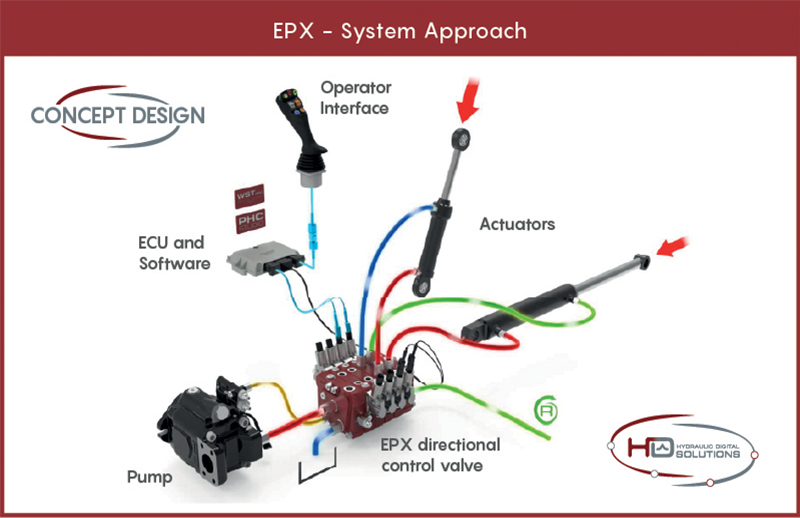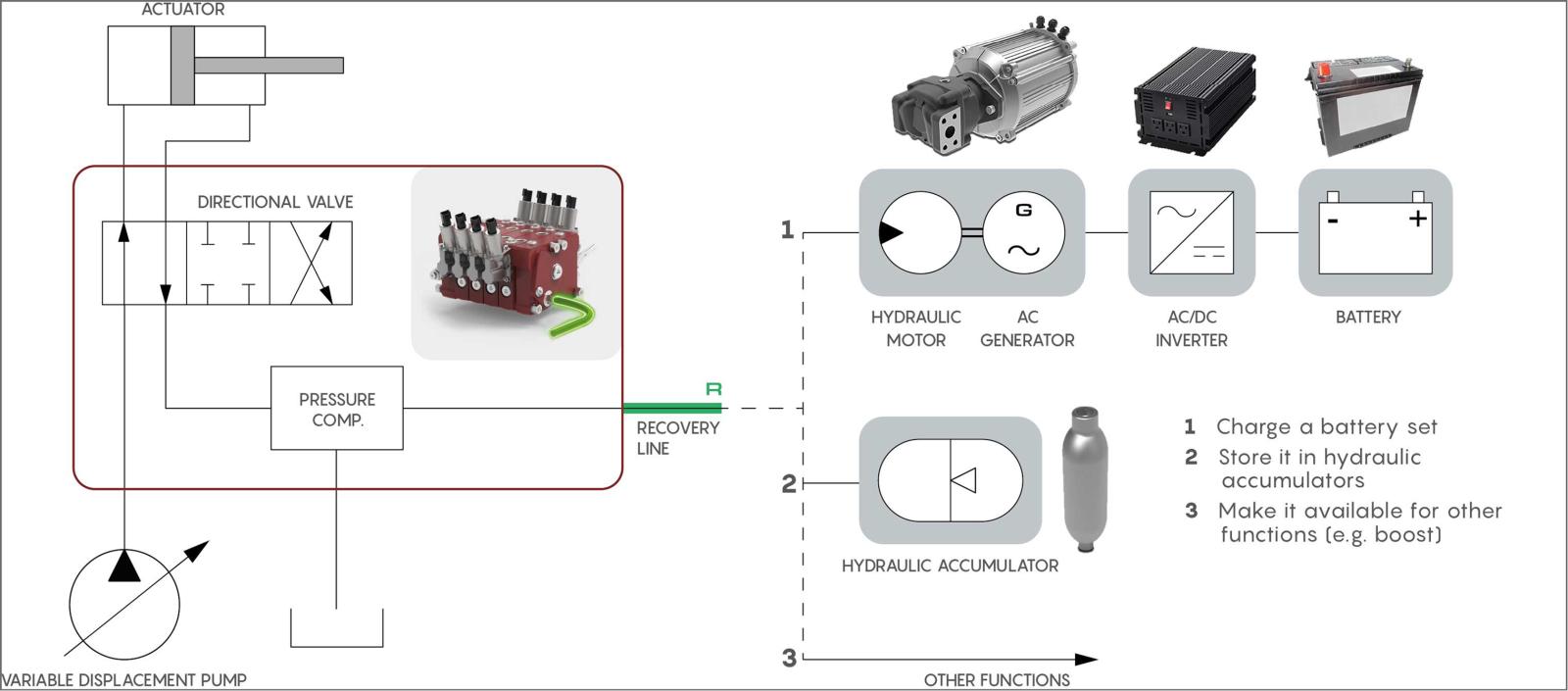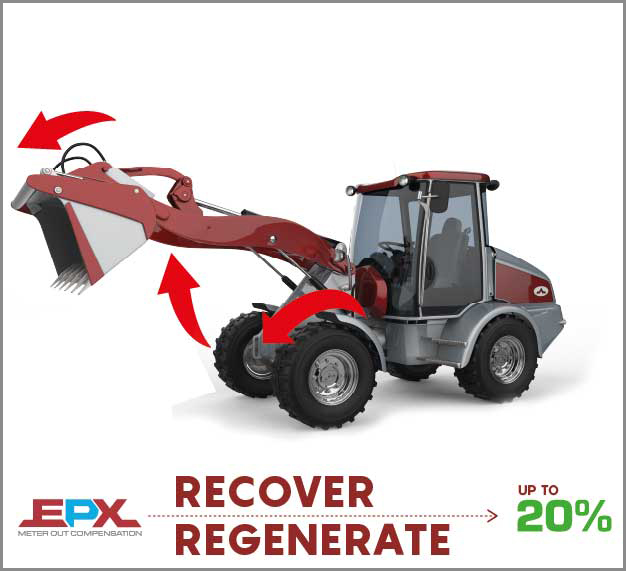
AT AGRITECHNICA 2025 THE EVOLUTION OF THE EPX – ENERGY RECOVERY VALVE CONCEPT
Hydraulic systems have evolved to maximize the predictability of actuation speed. Flow compensation is a well-known technology that mechanically corrects the actuator speed if it exceeds the operator's demand due to inertial load. This is achieved through a mechanical device introducing a pressure drop to limit the flow when necessary.

EPX – Energy Recovery Valve, part of the Hydraulic Digital Solutions, innovates beyond the industry standard with a three-way device that not only limits actuation speed but also recovers stored gravitational and kinetic energy.
The most common advanced hydraulic systems do include in the main control valve a hydraulic compensator.
This 2-way mechanical device allows to limit the flow rate to the actuator through a restriction. Typically, this compensator is placed in the delivery line that connects the pump to the actuator inlet. Two technologies are present now on the market: when the compensator is placed upstream the spools the technology is known as "pre-compensated” systems, vice versa when the compensator is placed "downstream” to the spool, that technology is called "post compensated” and allows flow sharing operation.
This feature is very useful when the flow request by the operator is more than the pump possibilities: in this condition, the directional control valve maintains the flow repartition between sections. The hydraulic system is then typically completed with counterbalance valves to improve further the actuation precision.
EPX's approach combines two key innovations:
Meter-out compensation
This design improves the control of unbalanced loads. Meter-out compensation provides extra flow restriction when the load is unbalanced, preventing unwanted velocities due to the load on the cylinders or motors. This innovation also simplifies the load control valves: in a meter-out system the meter compensator protects against load drifting. The secondary valves are used in this case only as safety equipment.
These safety valves, typically flanged on the cylinder, are designed to have minimal pressure drop and minimal impact on regular valve operation. Example of simplified safety valves are pilot-operated check valve or an electric on/off valve.
Three-way compensation
This patented design introduces an extra flow path to the meter-out compensator. During operation, the compensator measures the fluid pressure: if the pressure exceeds a determined threshold, an extra path is opened, pressurizing the recovery line with the stored energy in the actuator.
The combination of these two innovations provides a flow-sharing solution that can recover stored energy in the machine.

EPX technologies are evolving to minimize the environmental impact and stabilize the power consumption of the next generation of hydraulic systems.
Testing activities on wheel loaders have demonstrated a 20% of energy saving combining recoverable energy and reduction of compensation losses.

Other case studies:
Case study #1 - Lifter
Industrial lifters are used to move materials in harbours. A typical working cycle has lifting and lowering operation with and without load. EPX technology stabilizes the power demand of the actuators allowing smaller components and steady-state operation.
Case study #2 - Telehandler
One of the quickest evolving construction machines, telehandlers represent several challenges: a hybrid machine between a crane and wheel loader needs perfect control of all the functions and low dissipation in short stroke. EPX avoids counterbalance dissipation and provides a source of recovered energy.
Case study #3 - Compact wheel loader
Compact wheel loaders are quickly evolving through electrification allowing their usage in closed and noise sensitive environments. EPX provides a solution that limits the hydraulic dissipation in the electric application.

 SCOPRI LE NOVIT� DI PRODOTTO
SCOPRI LE NOVIT� DI PRODOTTO
